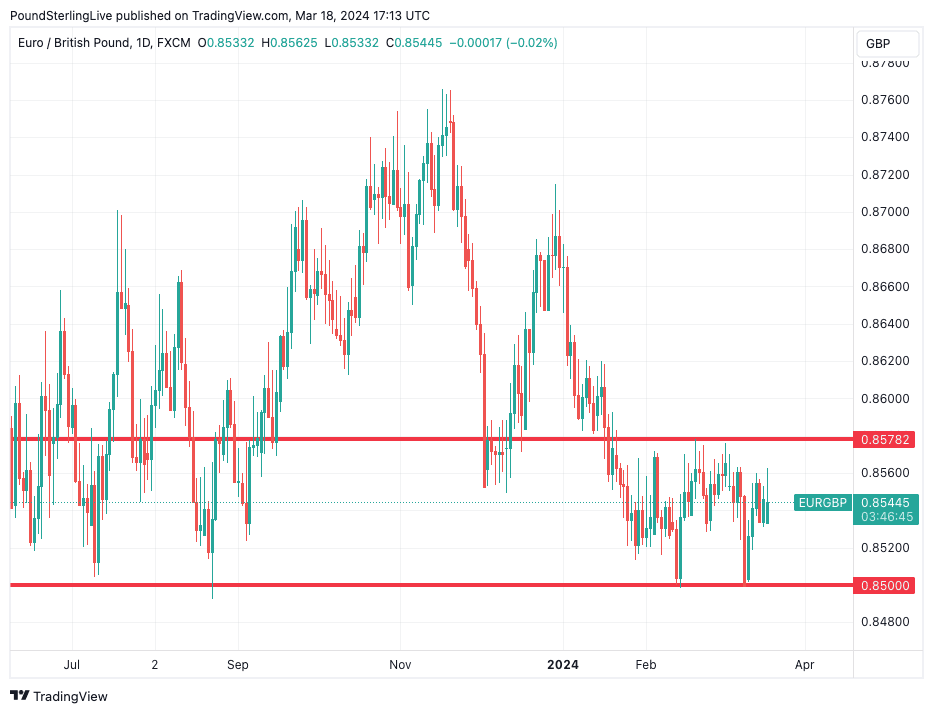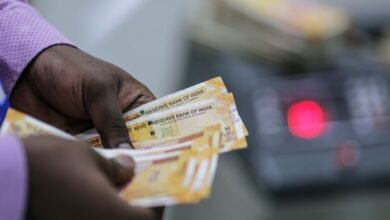NatWest Turn Cautions on Pound’s Prospects Against the Euro


Image © Adobe Images
According to a new analysis from one of the UK’s biggest banks, the prospect of a material move higher in the Pound to Euro exchange rate is looking increasingly remote.
In its latest foreign exchange research briefing, NatWest Markets says Pound Sterling is unlikely to break a key level against the Euro, in part because the Eurozone economic outlook is brightening.
“With relative yields stable, ’24 easing expectations underpriced and positive euro area data surprises on the rise, we have decided to take profit on our EUR/GBP short position established in late November,” says Paul Robson, Head of G10 FX Strategy at NatWest.
Central bank dynamics are an additional factor behind the decision. Relative expectations for the level of Bank of England and European Central Bank (ECB) interest rates by year-end remain largely stable, with a modest move in favour of EUR upside.
“This has come as UK data softens and euro area data surprise to the upside. This has diluted one of the key reasons to be short EUR/GBP,” says Robson.
Last week Euro-Pound failed on two consecutive days to break below 0.85, which equates to a failure by Pound-Euro to rise above 1.1765.
Interestingly, this pattern was repeated in mid-February, confirming the strength of support the Euro finds here. Similar patterns were noted in July and August of 2023:
Above: Euro-Pound at daily intervals. Track GBP and EUR with your own custom rate alerts. Set Up Here
“While it’s possible the change in EUR/GBP becomes a function of the level of carry, the failure of EUR/GBP to break 0.85 suggests this hasn’t been enough to offset likely buying pressure from UK and European corporate due to the bilateral trade deficit,” says Robson.
Near-term attention now turns to the UK inflation release, due Wednesday, ahead of Thursday’s March PMIs and Bank of England decision.
The Bank will keep interest rates unchanged, leaving investors to focus on the signals from the vote split on the Monetary Policy Committee (MPC), the statement, and the meeting minutes.
“None are expected to shift dramatically,” says Robson. Economists at NatWest expect a repeat of February’s 1-6-2 (-25bp, unchanged, +25bp) vote.
They see the transition to policy rate cuts “more evolution than revolution” and do not expect a more decisive shift in guidance until May.
Track GBP and EUR with your own custom rate alerts. Set Up Here
However, Matthew Ryan, Head of Market Strategy at Ebury, warns that any “dovish shift” in the voting pattern, whereby one, or perhaps both, of those who voted for further hikes now opt to vote for rates to stay unchanged. “This could provide some near-term downside to sterling,” he says.
Traders will likely fade any weakness, as any ‘dovish’ shift in the voting pattern would still be consistent with the “more evolution than revolution” description mentioned above. In short, it won’t be a significant game-changer.
The Bank’s message has consistently been that more evidence of moderating wage and domestic inflation is required before rates can be cut, suggesting a few more inflation and job reports will be needed before rate cuts are locked in.
Looking further ahead, NatWest says the market is underestimating the speed at which the Bank of England will ease policy (cut interest rates) in 2024.
Economists say the Bank could cut interest rates by as much as 50 basis points on two occasions this year, which would catch the market offside given the consensus looks for smaller increments of 25bp and a total of 62bp expected for the year.
This could mean the Bank of England ‘outcuts’ the European Central Bank, resulting in Pound-Euro downside in the second half of the year.
Source link







